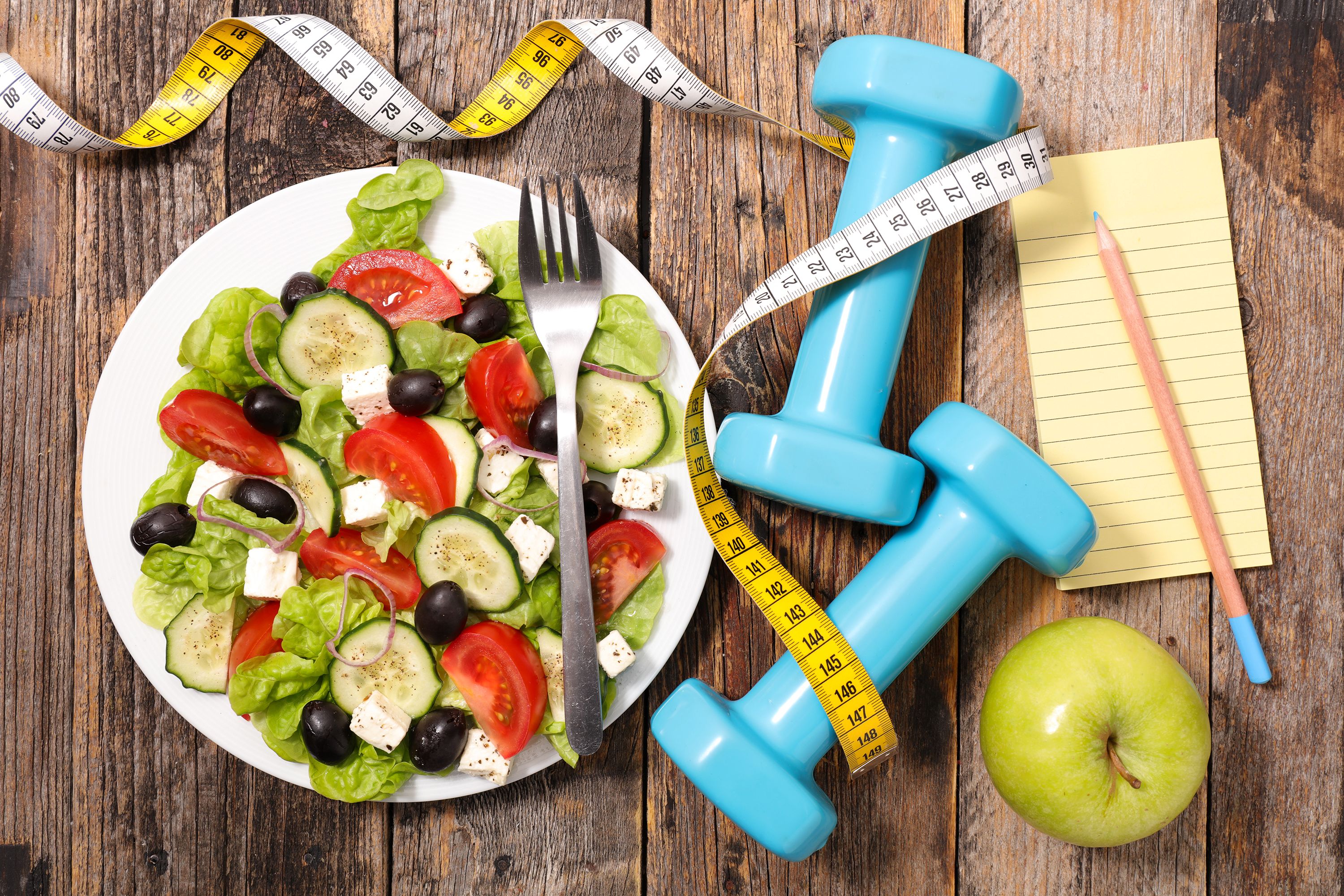
In the vast, often overwhelming landscape of online fitness today, a particular type of content has become ubiquitous, flooding our feeds with urgent calls for physical transformation. Videos with titles screaming ‘How to get slim, toned arms’, ‘Exercises for a snatched waist’, and ‘Killer ab crack workout’ dominate platforms like TikTok, presenting a relentless barrage of prescriptive advice aimed at altering one’s physical form. These clips frequently feature ‘Transformations’ where bodies already considered slim are depicted becoming even smaller, accompanied by endorsements of specific weightlifting routines and healthy recipes, painting a picture of an aspirational, yet often unattainable, physical ideal.
The underlying message within this content is strikingly clear and direct: to achieve the depicted physique, one must strictly adhere to the influencer’s specific eating patterns and workout regimens. ‘What I eat in a day’ recaps are shared by figures who begin their videos by displaying highly defined abs, and sponsored products like zero percent Greek yogurt and protein bars are heavily schilled using discount codes. This constant stream of visually driven content, while often framed as motivational, effectively reinforces the idea that worth is tied to physical appearance and that a singular, lean aesthetic is the ultimate goal.
Despite the apparent cultural shift towards greater inclusivity and body positivity that has gained traction over the past decade, the prevalence of shaky, often misleading, ‘health-related’ content remains a significant concern. Instead of waning, this content, which actively encourages individuals to shrink themselves and adopt worrying eating patterns, is thriving, reaching diverse audiences from teenagers to women in their thirties. While past harmful movements like #ThinSpo and #ProAna were more easily identifiable, a more insidious form of diet culture has quietly, and then loudly, rebranded itself under the guise of ‘betterment’, making its damaging influence harder to recognise and resist.

1. **FitTok’s barrage of “shrink yourself” content**: The digital realm of fitness, particularly platforms like FitTok, has become a primary vector for disseminating messages that prioritize physical reduction above all else. Scrolling through feeds, one is constantly confronted with videos employing dramatic and urgent titles such as ‘How to get slim, toned arms’, ‘Exercises for a snatched waist’, and ‘Killer ab crack workout’, explicitly targeting perceived flaws and promising rapid, localized results. This content often showcases ‘Transformations’ that depict already slender bodies undergoing further depletion, presenting an ideal of thinness that is frequently amplified by the visual medium.
These videos are not just demonstrations of exercises; they are comprehensive lifestyle prescriptions. Influencers share detailed ‘What I eat in a day’ recaps, often starting by prominently displaying their abdominal muscles, reinforcing the link between strict dietary adherence and the desired physique. Accompanying these are promotions for specific food products, like zero percent Greek yogurt and protein bars, often linked to discount codes, turning the pursuit of a specific body type into a consumer activity. The message, articulated through both visuals and endorsements, is unambiguous and directive: ‘eat like me to look like me,’ creating a powerful, albeit often unrealistic, standard for millions of viewers.
The reach of this content is vast, clogging the feeds of users across demographic lines. It appears on the For You Pages of impressionable 14-year-olds and the Explore pages frequented by women in their 30s, spreading its influence widely. This accessibility means that potentially harmful messages about shrinking one’s body and adopting restrictive eating patterns are constantly presented to a broad audience, normalising a focus on physical size over holistic health. The sheer volume and visibility of these posts contribute significantly to the pervasive pressure to conform to narrow body ideals in the digital age.

2. **The sophisticated rebranding of diet culture as “betterment.”**: The conversation surrounding health and fitness online appears, on the surface, to have evolved significantly, with a decade-long push towards inclusivity and body positivity attempting to counteract historical pressures. However, beneath this surface, a powerful undercurrent of restrictive thinking persists, largely enabled by a strategic shift in how diet culture presents itself. Content promoting shrinking one’s body and adopting potentially worrying eating habits is not diminishing; rather, it is flourishing, having found new and more palatable packaging.
Historically, harmful ideologies promoting extreme thinness were often overtly labelled, with hashtags like #ThinSpo and #ProAna serving as clear, if dangerous, indicators of the content’s focus. The modern iteration, however, is far more subtle and thus arguably more insidious. Over recent years, a form of diet culture has undergone a significant transformation, quietly at first, and now with considerable volume and visibility, rebranding itself as ‘betterment’. This linguistic shift positions restrictive eating and intense exercise not as tools for weight loss driven by external pressures, but as components of personal growth, self-improvement, and optimal health, making the underlying toxic messages harder for individuals to identify and challenge.
By framing body transformation as ‘betterment’, this rebranded diet culture taps into broader societal desires for self-optimisation and personal achievement. It encourages individuals to view calorie restriction, intense training schedules, and the pursuit of a lean physique as positive, empowering choices indicative of discipline and self-care, rather than potential expressions of disordered relationships with food and exercise. This sophisticated marketing allows the harmful core of diet culture – the pressure to control and reduce one’s body size – to persist and thrive, often disguised behind a veneer of health and wellness goals that resonate strongly in contemporary culture.

3. **Unpacking the myth of targeted fat loss**: Central to much of the quick-fix fitness content circulating online is the persistent and pervasive myth of targeted fat loss. Despite being widely debunked by scientific research, the idea that one can reduce fat from specific areas of the body, such as the abdomen, arms, or thighs, through particular exercises or dietary strategies remains a cornerstone of many viral videos and fitness programs. This notion is particularly harmful because it promotes unrealistic expectations and can lead individuals to focus on ineffective methods while neglecting principles of balanced nutrition and overall physical activity.
As a health editor and fitness trainer, the author expresses acute awareness of the significant limitations and lack of nuanced research supporting many of the recommendations regarding the ‘best’ ways to move and eat that are so freely peddled online. The digital space is flooded with advice that is not only oversimplified but often contradictory and unsupported by evidence. This environment makes it challenging for individuals to discern accurate, helpful information from misleading claims, perpetuating ineffective practices based on anecdotal evidence or commercial interests rather than scientific understanding.
The author directly confronts one of the most prominent myths: the idea of spot reduction. They unequivocally state that eating styles are not one-size-fits-all, highlighting the fundamental biological variation between individuals that makes universal dietary prescriptions ineffective. Furthermore, they declare the idea that you can target specific areas for fat loss to be “absurd,” directly challenging what videos on ‘losing belly fat’ and similar content would have people believe. This expert perspective underscores the disconnect between the aspirational, yet factually inaccurate, promises made online and the reality of how human physiology functions, revealing the deceptive nature of much of the targeted fat loss content.

4. **#StrongNotSkinny: A complex legacy of empowerment and harm**: The mid-2010s marked a pivotal moment in the evolution of fitness culture, particularly with the emergence of movements like #StrongNotSkinny around 2014. This period saw a new wave of fitness content flooding phone screens, positioned as a direct rejection of the damaging, ultra-thin size zero ideals that had dominated the ’00s. It seemingly offered an alternative focus: building muscle and strength rather than mere thinness, resonating with many women looking for a healthier approach to fitness that felt more empowering.
However, as the movement grew, its complexities and inherent contradictions became more apparent. While it presented itself as a rejection of traditional diet culture, the author argues that it contained “all of the toxic hallmarks of fat-shaming repackaged through a ‘female empowerment’ lens.” The visual culture associated with it, characterised by Valencia-filtered images of women displaying small, round muscles, often still within slender frames, reinforced a specific, narrow body type as the ideal. This was accompanied by highly regimented content, including novelty nutrition videos featuring restrictive dishes like zoats, protein shakes, closely documented six-day-a-week training plans, and influencer-sold bikini body PDF guides, fostering a relentless “no days off” attitude.
Despite its problematic aspects, the #StrongNotSkinny movement also had genuinely positive impacts for many. It helped numerous women find an entry point into movement and weight training, which had historically been male-dominated spaces. The focus shifted, for some, towards building their bodies and appreciating their physical capabilities rather than solely focusing on shrinking themselves. The author personally reflects that seeing a woman with a barbell in her hands for the first time felt “exciting” and “groundbreaking,” even influencing her own career path. However, the limitation remained: growth was largely acceptable only if it resulted in muscle built within an already tiny frame, highlighting that the movement did not fully escape the narrow body ideals it initially claimed to reject.

5. **The personal cost: Anxiety, IBS, and amenorrhoea linked to toxic fitness pursuits**: The intense pressures and unrealistic expectations propagated by movements like #StrongNotSkinny and the broader online fitness culture can have profound and damaging effects on individuals’ health, extending far beyond physical appearance. The author shares their personal story, beginning at age 18, of being easily influenced by this “new, shiny and appealing industry.” What started as a hopeful pursuit of fitness to feel better about their body ultimately led to significant physical strength, but also serious health problems.
The relentless adherence to the demanding, often restrictive, practices promoted within this aspirational lifestyle triggered a cascade of negative health consequences for the author. They experienced a severe flare-up of debilitating IBS, a chronic digestive condition, demonstrating the direct physical toll that stress and restrictive eating patterns can take on the body. Simultaneously, their lifelong anxiety became unmanageable, highlighting the significant mental health burden associated with constantly striving for a demanding physical ideal and the pressures of adhering to rigid schedules and dietary rules.
Perhaps most alarmingly, the author developed amenorrhoea, a condition characterised by the absence of menstrual periods. This is a well-documented consequence of insufficient energy intake and/or excessive exercise, as the body shuts down non-essential functions to conserve energy. The author’s experience starkly illustrates how the pursuit of a seemingly healthy, aspirational fitness lifestyle, fuelled by toxic online trends, can lead to severe internal physical dysfunction, serving as a powerful personal testament to the harms inherent in these movements when taken to extremes.

6. **Leaders of past movements speaking out against their hidden struggles**: A significant development in the fitness community in the years following the peak of #StrongNotSkinny has been a collective ‘reckoning’, as many individuals who were prominent figures within the movement have begun to speak openly about the hidden struggles they experienced while outwardly promoting aspirational lifestyles. This shift has provided crucial transparency regarding the potential disconnect between the polished, seemingly perfect images shared online and the reality of their personal health and well-being during that time.
One notable example is Alice Liveing, who gained a large following under the moniker ‘Clean Eating Alice’ by sharing images of her chiselled body, intense workout routine, and low-calorie recipes. In 2017, she publicly distanced herself from the restrictive aspects of her past by notably ditching ‘clean’ from her Instagram handle. More significantly, she has since been candid about the fact that she was secretly battling an eating disorder and exercise addiction during the period when she was a leading figure in the ‘clean eating’ and strength movement, revealing the personal cost behind the public persona.
Similarly, the founders of the popular #GirlGains community, Zanna Van Dijk, Victoria Spencer, and Tally Rye, who were influential proponents of strength training and macro counting, have also shared their personal experiences with unhealthy relationships with food over the years. Their content has evolved, moving significantly away from the explicit promotion of fat-burning and glute-sculpting workouts towards embracing body acceptance and intuitive exercise, which encourages listening to the body’s needs rather than adhering to rigid routines. These public confessions from former leaders underscore the potentially harmful nature of the very movements they once spearheaded and highlight the pressure to maintain a specific image, even at the expense of personal health.




